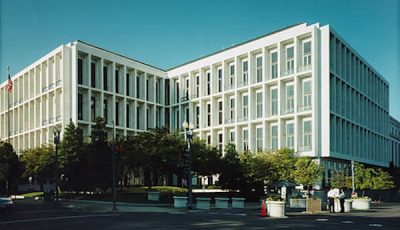The Net Neutrality Repeal Gets Real
 WASHINGTON – With the publication of its final rule rescinding net neutrality rules (or “Restoring Internet Freedom” as the FCC titled its order) established in 2015, the Federal Communications Commission has begun a 60-day countdown to the official removal of the regulations.
WASHINGTON – With the publication of its final rule rescinding net neutrality rules (or “Restoring Internet Freedom” as the FCC titled its order) established in 2015, the Federal Communications Commission has begun a 60-day countdown to the official removal of the regulations.
Under the 2015 rule, internet service providers were prohibited from selectively throttling or blocking access to certain websites and online services, and weren’t permitted to charge companies a premium rate to assure preferred delivery of their data and content to consumers.
One of the sticking points of the 2015 regulations, especially from the perspective of those opposed to the rules, was that the FCC was regulating internet service providers as “common carriers” under Title II of the Communications Act of 1934, as opposed to “information services” under Title I of the same legislation.
The FCC’s new order puts access providers back under the category of “information services,” making them subject to what the FCC describes in its order as a “light-touch regulatory scheme that fostered the internet’s growth, openness, and freedom.”
The issue of Title I vs. Title II regulation has led some commentators to adopt the position they are for net neutrality, but against regulation of internet access providers under Title II – a position explained at length in a blog post published late last year by Ben Thompson, a technology and media analyst and former employee of Apple, Microsoft and Automattic.
Before the order’s effective date, April 23, those opposed to the repeal still have several options forestall the application of the FCC’s new order.
Upon the filing of the FCC’s order last Thursday, a group of states which had previously filed a lawsuit to block the repeal of the 2015 net neutrality rules refiled their suit. The states involved in the lawsuit are California, Connecticut, Delaware, Hawaii, Illinois, Iowa, Kentucky, Maine, Maryland, Massachusetts, Minnesota, Mississippi, New Mexico, New York, North Carolina, Oregon, Pennsylvania, Rhode Island, Vermont, Virginia, and Washington, joined by the District of Columbia.
Several of those states, including Oregon, California and New York, are considering net neutrality measures at the state level. Montana, which is not party to the lawsuit, established its state-level net neutrality provisions by executive order back in January.
“This is a simple step states can take to preserve and protect net neutrality,” Montana Gov. Steve Bullock said when he signed the order. “We can’t wait for folks in Washington DC to come to their senses and reinstate these rules.”
At the federal level, Sen. Ed Markey of Massachusetts said he has 50 votes in favor of a Congressional Review Act action to reverse the FCC’s repeal, meaning he needs just one more to pass his measure.
“The internet doesn’t belong to big internet service providers and special interests who want to turn it into a toll road where consumers will pay more while the biggest corporations get to ride in the fast lane,” Markey said in a statement released last Thursday. “With only 60 legislative days to find one more vote, I call on my Republican colleagues to join us and the vast majority of Americans who want the internet to remain free and open and a level playing field for everyone.”
Even if Markey finds the additional vote he’s seeking in the Senate, whether the measure could pass in the House, where Republicans currently outnumber Democrats 238-193 (with four seats vacant) is a substantially different question. Even if such legislation were to pass, it would be subject to a potential veto from President Donald Trump, and it’s extremely unlikely supporters of the measure could get enough votes to override that veto in either chamber.
As for the FCC, Chairman Ajit Pai is adamant that repealing the 2015 rules was the right move, for both the country’s industries and citizenry.
“The United States needs modern, flexible, light-touch network regulation,” Pai said, “not a one-size-fits-all utility model from the 1930s. Without question, our most important move here was to reverse the previous administration’s decision to subject our 21st century networks to 20th century utility-style regulation.”
Unsurprisingly, democrats on the Commission don’t subscribe to Pai’s view of the 2015 rules. Commissioner Mignon Clyburn, said she’s “both disappointed and hopeful” in the wake of the new order being made official.
“Disappointed that this is one more anti-consumer notch on this FCC’s belt,” Clyburn said, “but hopeful that the arc of history is bent in favor of net neutrality protections.”
Despite the FCC’s action and the pending effective date of its new rule, Clyburn believes at the end of the day, net neutrality will win out.
“Whether it is litigation, state action, or some other mechanism that brings it about, I am sure that robust net neutrality protections will prevail with the American public,” she said.













